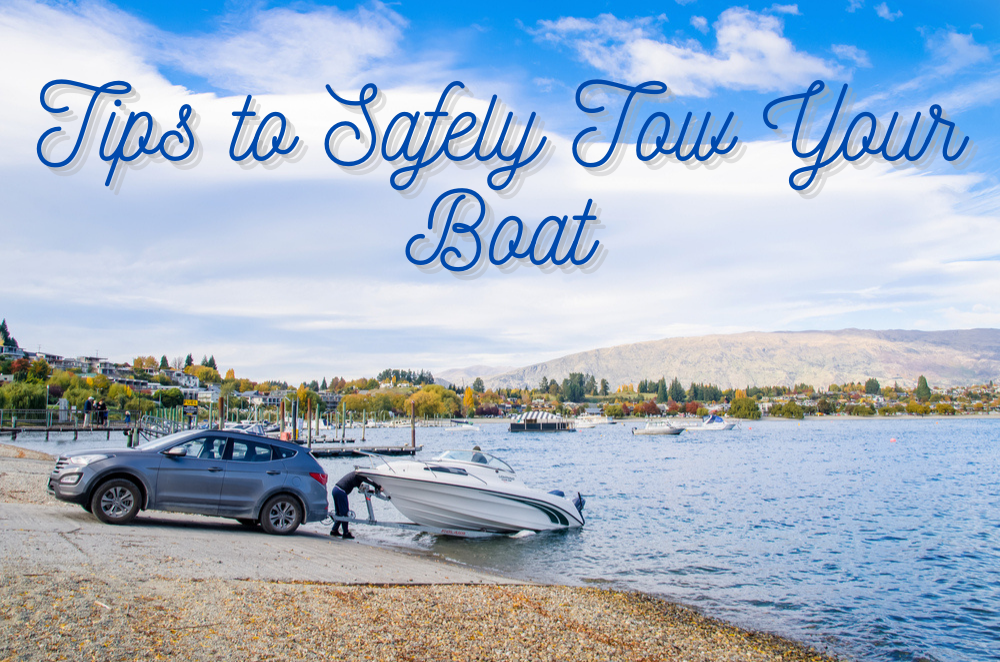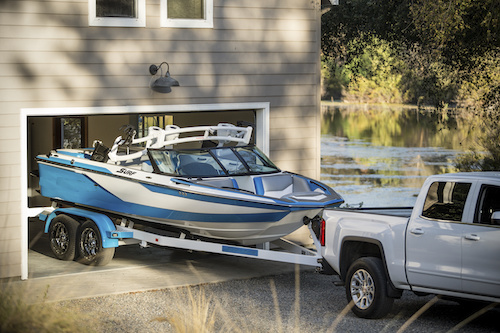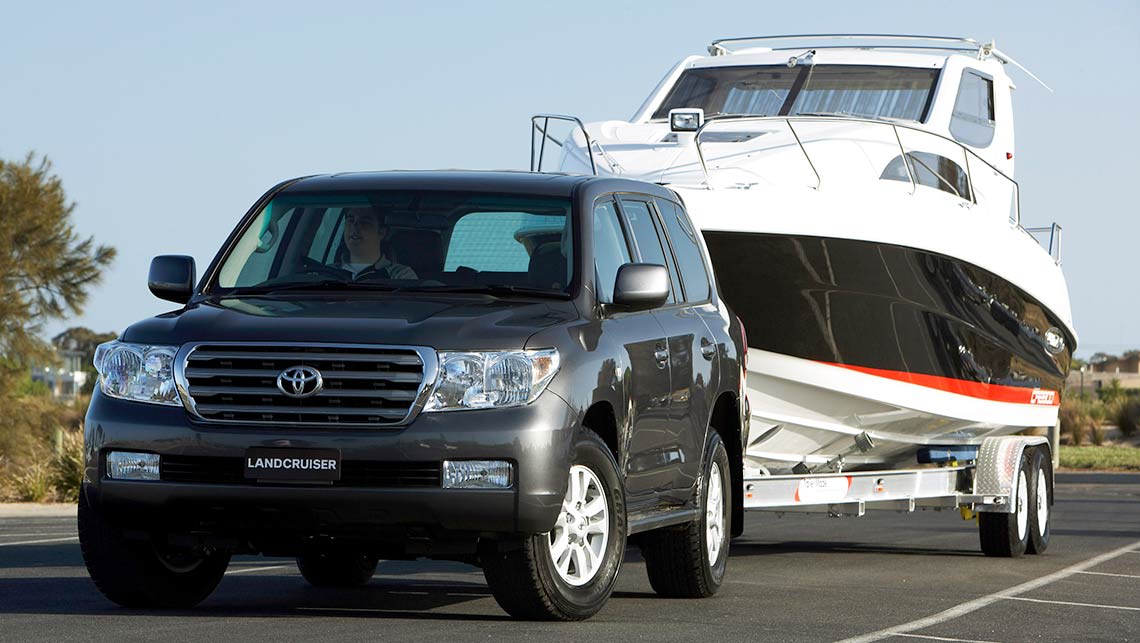
Towing a boat can be very difficult, especially for beginners. Towing a boat on a trailer will change the way any vehicle handles so it is important to read up on tips before hauling your boat to the next family vacation….
- Stay Within Your Limits:
You must review the towing capacity of your vehicle to ensure it will be capable of towing the weight of your trailer and boat. You also must check the owners manual to confirm your trailer hitch is capable of handling your trailers loaded weight. Check that the vehicle’s Gross Vehicle Weight (GVW), vehicle weight when empty, and the payload, the weight of all people and cargo in the vehicle, and the tongue weight of the trailer, do not exceed the Gross Vehicle Weight Rating (GVWR), the maximum operating weight of a vehicle. It is important to not exceed the GVWR maximum load capacity, which can be found on the Certification/Tire label on the driver’s side B-pillar or door.
- Know the Appropriate Tongue Weight:
Check the trailer owner’s manual to determine the downward force that the tongue of the trailer exerts on the hitch. This is usually between 10-15 percent of the total weight of the loaded trailer, but specific trailers (such as boat trailers) may fall outside of this range. Correct tongue load is critical in avoiding trailer sway. If the tongue weight is too high, there’s too much weight on the front of the trailer, which means there’s extra weight on the vehicle’s rear tires and too little weight on the front tires. You’ll find steering to be a little squirrelly, and you’ll want to redistribute some weight in the boat aft. If you don’t have enough weight on the tongue, redistribute the load in the boat forward. This may be as simple as moving heavy coolers toward the bow — though sometimes they will slide back when underway at high speeds. Other times, you may have to move the trailer’s winch forward to allow the boat to be winched farther forward to get more weight in front of the trailer axle. The latter must be done at home, not on the side of the highway.

- Tips For Getting the Boat On the Trailer:
Make sure the back of the trailer is well submerged and the front of the trailer, including the winch, is well out of the water. Never back down a ramp far enough that the tow vehicle is at all in the water… Until you’re quite handy with boat trailering, it’s better to approach the trailer very slowly using the boat’s motor and then to cut the power and haul the boat onto the trailer using the bow line and winch. Once you have it down, feel free to cruise onto the trailer and use the winch just for the last few feet.
- Packing Your Trailer Properly:
It is vital that you stay within the trailer’s maximum load capacity which is stated on the trailers load capacity label. Before taking off, you must make sure that the weight is evenly distributed on both the left and right sides of the boat, and everything is properly secured down and will not come loose on the freeway.

- Get Your Vehicle Ready!
- Check Your Tires: Ensure that your tires on your trailer are filled to the correct tire pressure as shown on the trailer tire pressure sticker or trailer tire sidewall. Also, Check the speed rating on the tires for both your tow vehicle and trailer and ensure that you never exceed that speed while on the road. Most trailer tires are rated at 65 mph unless stated otherwise on the sidewall.
- Check Your Lights: Check that the turn signals, tail lights and brake lights function properly by having a partner stand behind the vehicle while it is in park and you are testing.
- Check Your Brakes: Check the specific trailer brake requirements for any state where you plan to tow a trailer.
Chevrolet requires trailer brakes to be used on trailers weighing more than 2,000 pounds when pulled by a Chevrolet Silverado. Confirm that the emergency “breakaway” cable is properly attached to your tow vehicle, whether your trailer is equipped with hydraulic surge brakes or electric brakes.
- Always Perform a Walk-Around Inspection:
Before you get on the road, you should perform a walk-around inspection of the trailer to make sure everything is properly secured and attached. You will also want to complete these inspections periodically while on the road… A good rule of thumb is 1, 10, and 100 miles of driving in case a strap has come loose.
- Some Driving Tips:
Driving with a trailer changes the way your vehicle handles. It is important to practice in an empty parking lot before heading out onto the freeway for your vacation to get a feel for the differences! Remember that towing a trailer takes a longer distance to come to a stop… SO BRAKE EARLY! Some other things to remember while towing your trailer is:
- The trailer takes turns tighter than your vehicle: Your boat trailer will effectively turn inside of your turn, so you have to make your turns wider than will feel natural. The faster you’re going, however, the less true this is. As a general rule of thumb, when driving at speed, just give yourself a bit of extra room in turns but generally drive naturally. At slow speeds, like turning 90 degrees at an intersection, give yourself a lot of extra space.
- When backing up with a trailer, left is right: When you’re backing up with a boat trailer, turning the wheel of your car to the left will make the trailer go to the right… and vice versa. It’s a tricky mental game just to keep that straight, and then even harder to execute. Just remember this: The main error people make when driving a trailer in reverse is to steer too far to one side or the other.Usually a slight turn followed by straightening out the wheel is the best bet.
There is a lot to remember while hauling your boat and trailer to your Lakefront Home for vacation! While on your way, be sure to run through this on-the-road checklist to ensure that you make it there safely…
Posted By Scott Freerksen “The Lake Guy”
